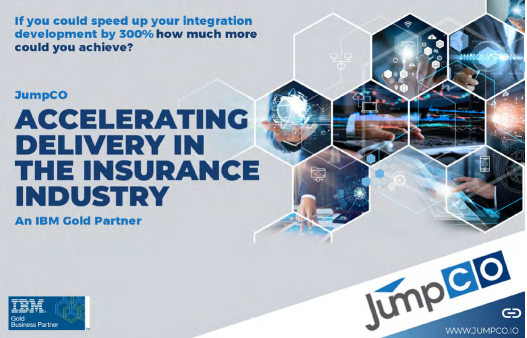Speaking to Mongezi Khuma, Integration Specialist at JumpCO, reveals interesting opportunities in the world of insurance technology.

Tony: As far as technology and specifically integration is concerned, you have quite a varied background. Please share with us how you started at JumpCO and where your interest in integration comes from.
Mongezi: I started at JumpCO as a developer and was then exposed to integration at one of the financial services companies. I went there to support, as they already had tools in place and that is when I got exposure to and learnt what integration is all about, what it can be used for, and how it assists organisations in getting other systems communicating with each other.
Tony: How much does integration differ between the industries you have worked in?
Mongezi: Every business has its own processes to get things done. Systems are different from financial to insurance to government entities. But technology doesn’t change much, it is just a matter of having the right data and having to analyse it and ensure that it’s distributed to the right stakeholders.
So, it wasn’t necessarily a culture shock, because of the exposure that I had in the financial sector. I have grown and become a kind of specialist in the area of integration. When I move into other entities or other environments, I can anticipate what they are planning to do. And through JumpCO, with the tools that we have, integration just becomes easier every time, it comes with experience.
Tony: Integration can mean many things. Can you give me a brief synopsis as to what you mean with integration and what JumpCO’s role is in this process?
Mongezi: We live in a world where systems are distributed all over the place and we have systems whose core functions are sitting somewhere else. Often, you won’t be able to acquire some of those functionalities. If you’re building something, for example, if you needed something that could do an ID validation, why duplicate when you can just go and speak to the home office to get you that service? That is when the integration space comes in to say, there is already a system in place, I need data A or data B, and it is available from this particular company, how do I get that data so that I am able to get my systems up and running as well?
Integration makes it possible for two stakeholder systems to communicate and exchange information without having to change or touch or introduce the risks in the endpoint systems.
Tony: You work with IBM and IBM Integration quite a bit. IBM is a big player in the insurance industry in various ways. Can you give us a feel for how IBM Integration impacts the insurance companies and subsequently the man in the street, the actual policyholder?
Mongezi: It is important to understand, as a service provider, that people are looking for efficiency. They want to have access to a service as quickly as possible without having to go through the process of trying to gather information themselves to submit. If I use a clinic as an example, with integration, if everything is digitised, they can have an individual’s profile ready when a claim comes through, and by simply checking a box, the information will go to the different systems for approval, in real time, without having to go through the process of filling out the forms or making phone calls.
Integration digitises everything and makes it readily available. It is basically a freeway of information that makes that information easily accessible from anywhere in the world or anywhere in a company.
Tony: Now, business carries on during all these processes, things don’t stop. You don’t switch off, and then after a month switch back on when you have done the integration. JumpCO Consulting offers a lot of value in that process, making sure that it is still business as usual, while you continue with the integration. How do you manage that process?
Mongezi: Integration makes things easy. There is a term called HA – High Availability. In the past, whenever there was maintenance of a particular stakeholder systems, there would have been downtime so that they could do those upgrades or fix whatever they needed to fix.
High availability basically just says, let us switch to the available system while you are doing your upgrades and, once you are done with the upgrades, you can switch back to the production live streams. That way everybody is happy, the system is live and there is no downtime, and if there is, it is very limited.
So that is what the IBM tools are capable of. All of them encourage High Availability because in this day and age, it is important to have information readily available, without any hiccups at the end of the day.
Tony: We spoke about the live environment and integration, and I know that one of the tools that you use specifically for that is the IBM DevOps. What are the benefits of using that specific tool?
Mongezi: DevOps basically simplifies the process of developing software, deploying it into the environment and making sure that it is live. So, what really happens is it puts measures in place where one can just confidently develop a solution and then deploy it without having to worry about having to go through the process of editing. So, you define the rules prior, to make sure that when you are done with your development, with a click of a button, everything gets tested, approved by the right people, and then migrated to the live environment.
With that, if there are any other issues that are unforeseen, it is much easier to go back without having to go through the process of trying to figure out what the issue is. With the click of a button, you can go back to the repository, fetch the previous version of the code, and then put it into the live environment with IBM CloudPak that is underpinned by RedHat OpenShift. At JumpCO, we encourage clients to follow that process.


